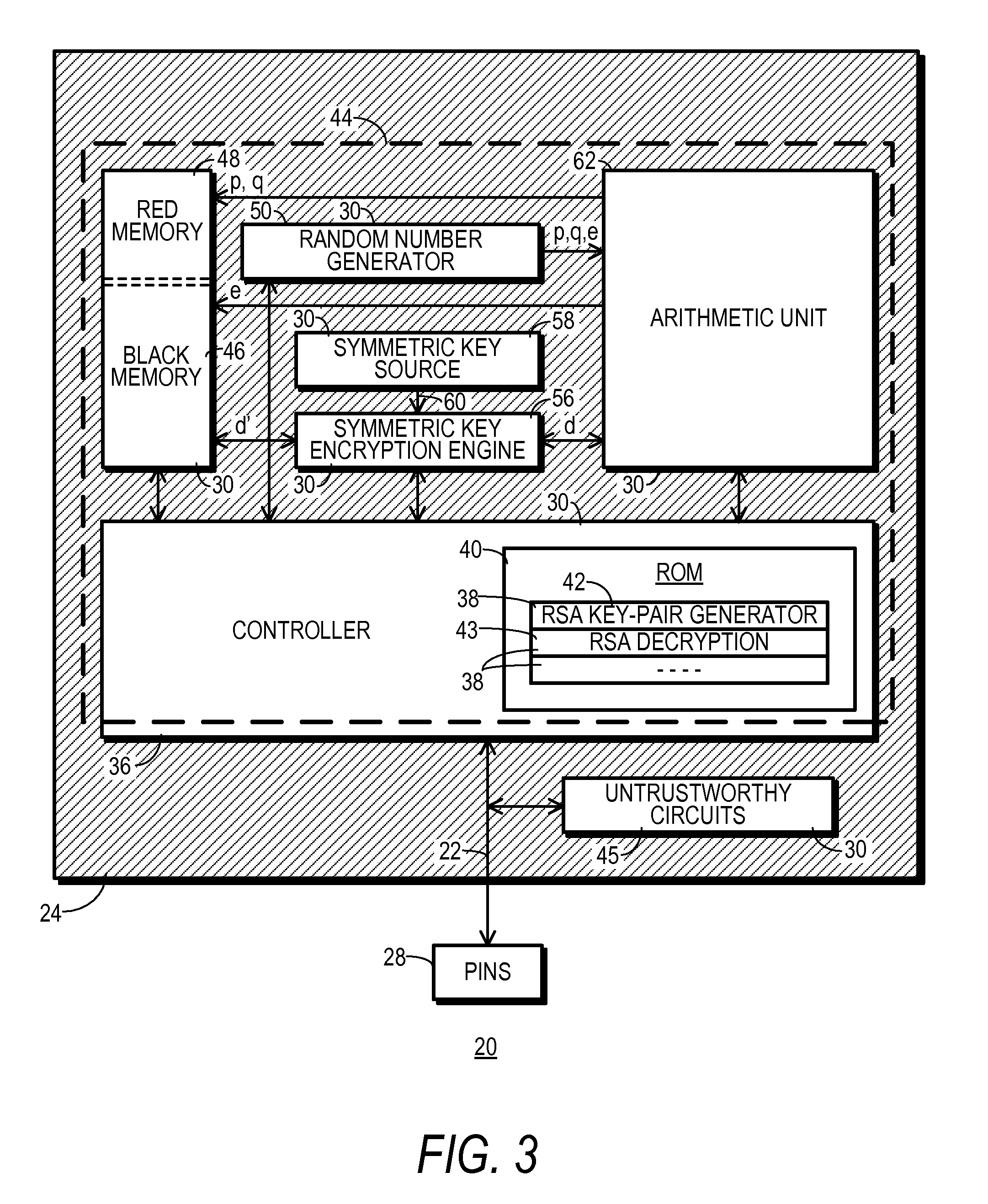Asymmetric Cryptographic Device With Local Private Key Generation and Method Therefor
a cryptographic device and local private key technology, applied in the field of secure data processing systems, can solve the problems of inability to derive, or even attempt to derive, a private key from a public key, and the cost associated with key generation, key distribution, validation and certification, etc., and achieve the effect of extreme and expensive measures, and the effect of avoiding the loss of private key data
- Summary
- Abstract
- Description
- Claims
- Application Information
AI Technical Summary
Problems solved by technology
Method used
Image
Examples
Embodiment Construction
[0020]FIG. 1 shows a block diagram of a data processing device 10 configured in accordance with the teaching of one embodiment of the present invention. Data processing device 10 may function as any of a wide variety of computing devices, including but not limited to a personal computer, desktop computer, workstation, server, laptop computer, handheld computer, music and / or video player, cell phone, telephone, facsimile machine, or DRM player.
[0021]Data processing device 10 includes a storage section 12, a processor section 14, and an input / output section 16 which couple to one another through one or more data busses 18. Each of sections 12, 14, and 16 and data busses 18 may be configured and operate in a conventional manner. Thus, storage section 12 may include any amount of both volatile and non-volatile memory configured for read and write operations. Computer software instructions for execution by processor section 14 and data for processing by processor section 14 may be stored...
PUM
 Login to View More
Login to View More Abstract
Description
Claims
Application Information
 Login to View More
Login to View More - R&D
- Intellectual Property
- Life Sciences
- Materials
- Tech Scout
- Unparalleled Data Quality
- Higher Quality Content
- 60% Fewer Hallucinations
Browse by: Latest US Patents, China's latest patents, Technical Efficacy Thesaurus, Application Domain, Technology Topic, Popular Technical Reports.
© 2025 PatSnap. All rights reserved.Legal|Privacy policy|Modern Slavery Act Transparency Statement|Sitemap|About US| Contact US: help@patsnap.com



